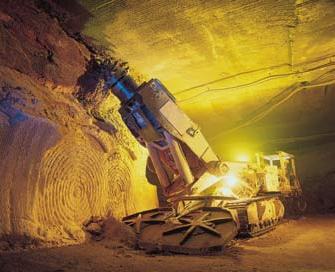Potassium salt is the feedstock for the manufacture of fertilizers. For this, natural materials are used: sylvinite, carnallite, cainite, Shenit and several others. They are extracted from deposits in the form of layers or lenses, lake sediments. Potassium salt belongs to the mineral resources of the non-metallic group; it and its compounds have a wide range of applications in various industries. Fertilizers are mainly made from them, in addition, they are used in the manufacture of detergents, chemicals, glass, in medicine, for tanning leather, and in the processing of silver and gold ores. Regardless of what potassium salt it is, its formula contains an element that served as the basis for its name. Despite the universality of the use of this raw material, its main purpose is the production of mineral fertilizers.

In agriculture, sylvinite potassium salt is often used. Fertilizers are made from it by mechanical grinding. Sylvinite is a compound of potassium chloride and sodium. It looks like large crystals of bluish, white or pinkish color. It has low hygroscopicity, so the fertilizer is easily applied to the ground and does not cake. Due to the large amount of sodium in it, it is better to use it for crops resistant to it: beets, carrots. Cainite is also considered a good raw material for fertilizers. Due to the high content of chlorine in it, it is mainly used for plowing in the fall of land intended for crops resistant to this element.

Another common fertilizer is potassium chloride, the price is insignificant, but the effect of its use has been appreciated by many agricultural producers. This material is in the form of white granules or crystalline salt. Due to the high concentration of nutrients easily absorbed by plants, this is the most popular fertilizer in agriculture. It is obtained by processing sylvinite, using the method of dissolution and crystallization or flotation. This substance is also characterized by low hygroscopicity. Its use for a number of crops is limited by a high content of chlorine. It is mainly used as top dressing and for sowing buckwheat, potatoes and cruciferous.
There is a fertilizer of the same name - potassium salt. Outwardly, it looks like crystals of orange-brown or pink-gray color. This type of fertilizer is produced by combining ground sylvinite and potassium chloride. This feed because of the high concentration of chemicals is used only for plowing in the fall.
Kalimagnesia is made from chenite. Outwardly, it looks like whitish crystals. Kalimag is produced by grinding langbeinite ore. This fertilizer is very similar to the previous one. The main difference is the low content of magnesia and potassium. Due to the absence of chlorine, these two fertilizers can be used to grow crops sensitive to this element.
Potassium sulfate is considered the main type of spring-summer feeding. They release it in the form of a crystalline white powder, which can be completely dissolved in water. Due to the latter fact, it can be used in the form of a drop top dressing in irrigation complexes. By efficiency, this fertilizer can be given one of the first places.